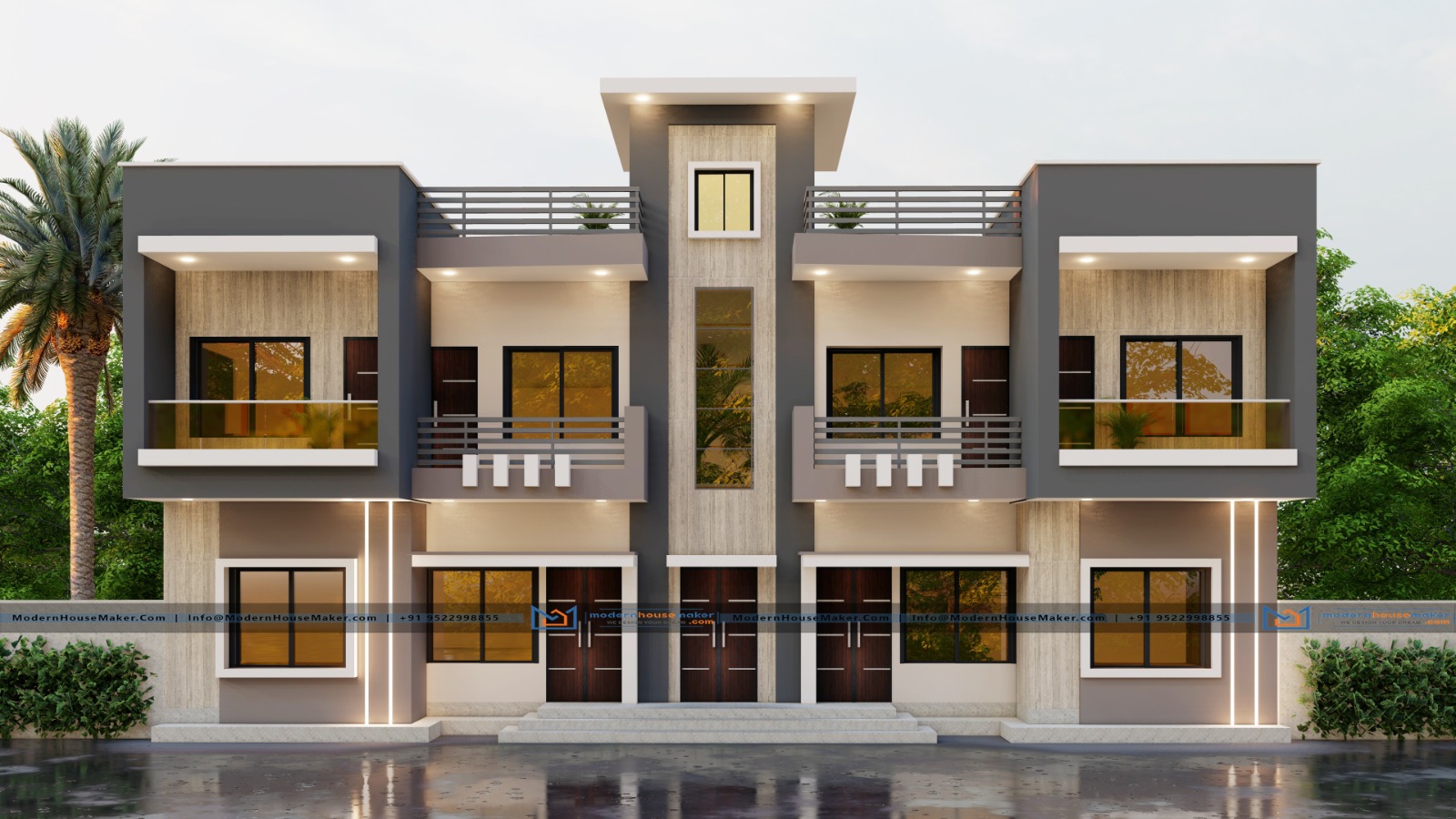How Regional Differences Influence House Designs In India
2024-11-09 07:34:51

India is a land of diverse cultures, languages, and traditions - and this rich tapestry of regional differences is beautifully reflected in the architecture of its homes. From the ornate palaces of Rajasthan to the colorful bungalows of West Bengal, each region boasts its own unique style that is influenced by history, climate, and local materials. Join us as we explore how these regional differences shape house designs in India and discover the fascinating stories behind some of the country's most iconic buildings.
Northern Region: Features, materials, and architectural styles commonly seen in houses
When it comes to normal house design in India in the Northern region of India, one can observe a blend of traditional and modern architectural styles. The houses often feature sloping roofs to combat heavy snowfall during winters. Materials like wood and stone are commonly used, adding a rustic charm to the structures.
Architectural styles in this region showcase intricate carvings on doors and windows, reflecting the rich cultural heritage. Courtyards are a common feature in many Northern homes, serving as gathering spaces for families. The use of vibrant colors on walls adds a pop of vibrancy amidst the serene landscapes.
Overall, houses in the Northern region exude warmth and coziness while embracing elements that withstand harsh weather conditions with timeless elegance.
Southern Region: Unique elements, layout, and building techniques in house structures
When it comes to the Southern region of India, house designs showcase a blend of tradition and innovation. The architecture in this region often features spacious verandas or courtyards that promote ventilation and natural light.
Unique elements like intricately carved wooden pillars, colorful tile work, and sloping tiled roofs are commonly seen in Southern homes. These design details not only add aesthetic appeal but also serve practical purposes such as protection from heavy monsoon rains.
The layout of different types of buildings in the South is often centered around a courtyard known as an 'angan' which acts as a focal point for family gatherings and celebrations. This traditional layout fosters a sense of community and togetherness within the household.
Building techniques in the Southern region emphasize craftsmanship and sustainability, with many homes constructed using locally sourced materials like clay bricks, terracotta tiles, and granite stones. These eco-friendly practices ensure that houses blend harmoniously with their natural surroundings while maintaining their cultural heritage.
Overall, the unique elements, thoughtful layout, and sustainable building techniques make Southern house designs a true reflection of the rich cultural tapestry of India's diverse regions.
Eastern Region: Cultural influences on house designs and common features
The Eastern region of India boasts a rich tapestry of cultural influences that are intricately woven into the designs of its houses. From ornate wood carvings to vibrant wall paintings, each architectural element tells a story steeped in tradition and heritage.
One common feature found in Eastern home construction India is the use of terracotta tiles for roofing, adding a rustic charm to the overall aesthetic. Intricate jharokhas (overhanging enclosed balcony) are another prevalent feature, often adorned with detailed carvings depicting local folklore and motifs.
Bamboo plays a significant role in construction here, with many houses incorporating bamboo walls or flooring due to its abundance in the region. Courtyards and verandas are also common features, fostering community interaction and providing spaces for social gatherings.
The fusion of cultural elements such as Bengali, Odia, Assamese, and Manipuri influences results in diverse house designs that reflect the unique identity of the Eastern region.

Western Region: Traditional and modern influences on house structures in this region
The Western region of India boasts a rich blend of traditional and modern influences reflected in its house designs. Traditional havelis with intricately carved facades coexist harmoniously with contemporary villas featuring sleek lines and minimalist aesthetics.
In this region, you can find houses adorned with vibrant Rajasthani frescoes alongside structures incorporating sustainable materials and eco-friendly design principles. The fusion of old-world charm and modern innovation creates a unique architectural landscape that captivates the eye.
Architects in the Western region often draw inspiration from both historical palaces and cutting-edge urban developments to create homes that are not only visually stunning but also functional for the needs of modern living. This seamless integration of tradition and progress sets the housing designs in this area apart from other regions in India.
Factors influencing regional differences in Indian house designs
India is a melting pot of diverse cultures, traditions, and landscapes. These regional variations play a crucial role in shaping the architecture and design of houses across the country. Factors like climate, availability of materials, historical influences, and local customs all contribute to the unique house designs found in different regions of India.
In the Northern region, houses often feature intricate wooden carvings and sloping roofs to withstand heavy snowfall during winters. On the other hand, in the Southern region, houses are characterized by open courtyards for cross ventilation to combat the tropical heat.
Moving towards the Eastern region, you'll find houses reflecting cultural influences through vibrant colors and terracotta roof tiles. In contrast, Western India showcases a blend of traditional craftsmanship with modern architectural styles resulting in striking structures that stand out amidst urban landscapes.
Understanding these factors is essential when exploring the rich tapestry of Indian house designs that celebrate diversity at its best.
The role of climate and environment on the design of houses in different regions
Understanding the influence of regional differences on home construction india is essential to appreciate the rich diversity and cultural heritage present throughout the country. From the traditional architecture of the Northern region to the modern influences in the Western region, each area showcases unique elements that reflect its history, culture, and environment.
The role of climate and environment on home construction india further emphasizes how practicality meets culture in creating functional yet aesthetically pleasing homes. Whether it's using natural materials for insulation in colder regions or incorporating ventilation systems to combat humidity in coastal areas, Indian house designs are a testament to adaptability and ingenuity.
Exploring these regional variations not only offers insight into architectural styles but also provides a glimpse into the diverse lifestyles and traditions that have shaped them over centuries. As we continue to celebrate this blend of past and present influences, it becomes evident that Indian house designs are more than just structures – they are symbols of unity amidst diversity.
In conclusion,
Modernhousemaker have become increasingly popular for their ability to transform outdated living spaces into stylish and functional homes. By incorporating sleek designs, smart technology, and sustainable materials, these renovations not only improve the aesthetic appeal of a home but also enhance its functionality and value. Whether you are looking to sell your house or simply upgrade your living space, a modern house makeover can be the perfect solution to achieve your desired results. So don't hesitate to explore this trend and see how it can elevate your home's style and comfort.
